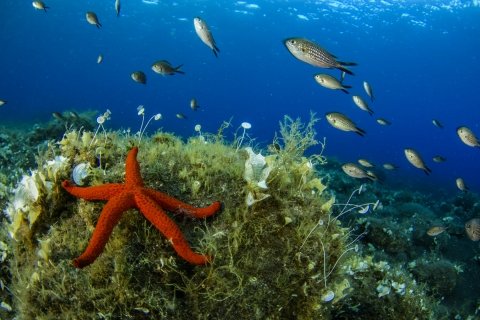Crossing Charybdis - New 2022 Expedition
We are very excited to announce the launch of our 2022 expedition ‘Crossing Charybdis’. This will be a crossing of the Charybdis maelstrom which lies in the Straits of Messina between Sicily and Italy. The swim will be roughly 3.2km depending on currents with a narrow window to make the crossing.
All three of us have a real affinity for maelstroms. These almost mythical formations make for some of the most fascinating swimming you can experience. We have swum across the 3 largest ones and are on a mission to complete the Maelstrom 7. In 2015 we crossed the Corryvreckan off the coast of Scotland and in 2016 we crossed the Moskstraumen and Saltstraumen in the Arctic Circle. But it has been 5 long years since all three of us went on an expedition (2017s Wild Lady of Loch Broom). Moving abroad, life, marriage and pandemics have got in the way but we are very excited to have all three of us back together and attempting to cross a maelstrom.
Charybdis Mealstrom
Charybdis lies in the Strait of Messina, smack in the middle of the Mediterranean that divides mainland Italy from the island of Sicily. In ancient times, it was called the Strait of Scylla and Charybdis, referring to the strong tidal currents characterized by Greek legend. In ocean swimming, it’s hard to give precise distances due to variances of currents, wind and waves, but the shortest course between Sicily and mainland Italy is 3.2 kilometres or a smidge under 2 miles.
James Gillray, Britannia between Scylla and Charybdis (1793)
Scylla and Charybdis were mythical sea monsters noted by Homer; Greek mythology sited them on opposite sides of the Strait of Messina between Sicily and Calabria, on the Italian mainland. Scylla was rationalized as a rock shoal (described as a six-headed sea monster) on the Calabrian side of the strait and Charybdis was a whirlpool off the coast of Sicily. They were regarded as maritime hazards located close enough to each other that they posed an inescapable threat to passing sailors; avoiding Charybdis meant passing too close to Scylla and vice versa. According to Homer's account, Odysseus was advised to pass by Scylla and lose only a few sailors, rather than risk the loss of his entire ship in the whirlpool. These legends gave rise to the sayings "between the devil and the deep blue sea", and "between a rock and a hard place". No better place for 3 brothers to hurl themselves into…
Henry Fuseli's painting of Odysseus facing the choice between Scylla and Charybdis, 1794
The first documented successful swim was in 1930, and other Italian swimmers followed with competitive crossings, organized groups, different points of departure, swims in various strokes, in wetsuits, with flippers and without. Each swim must be accompanied and led by a knowledgeable team with a local fisherman who knows the currents and our swim will be no different.
We will be piloted by the legendary Giovanni Fiannaca, world record holder of the Messina Strait since 1975. He will be checking the "Messina Strait" currents and be our swim crossing technical support. As well as Giovanni we will be joining a group of 30 Italian swimmers making the crossing as part of the Water World Swim crossing. This is an annual crossing but hasn’t been run for the last two years due to the pandemic. It should make for an emotional reunion and we cannot wait to share the water with our fellow Italian merpeople.
Strait of Messina
As part of the swim we would also like to raise awareness and urge the Italian government to protect a marine wildlife hotspot in Sicily and to create a marine protected area (MPA). New research has highlighted the biodiversity value of Sicily’s Aeolian Islands, with 900 marine species found in an area the size of Rome. These islands lie very close to Charybdis and we hope to draw attention to their plight.
A new report by the international marine conservation organisation shows that the underwater volcanic slopes and deep-sea waters of the Aeolian Islands are home to a rich diversity of marine life, including 16 species threatened with extinction. Marine scientists discovered giant oysters, black corals that can live up to 2,000 years, a species of glass sponge found only twice before in the Mediterranean Sea, and one of the largest known forests of the most threatened coral in the Mediterranean: Critically Endangered bamboo coral. Preserving this area would also be the first time Italy protects hydrothermal vents, features that are found near deep-sea volcanoes and which house rare organisms.
MPAs are one of the most effective tools for protecting ocean life and mitigating damage from pollution, marine litter, destructive fishing, and maritime traffic.
We will be attempting the crossing on June 23rd and look forward to taking you all on another maelstrom adventure.
Red starfish (Echinaster sepositus)
© OCEANA / Juan Cuetos
Critically Endangered bamboo coral (Isidella elongata) © OCEANA
Garden of sea fans (Paramuricea clavata) © OCEANA / Juan Cuetos







